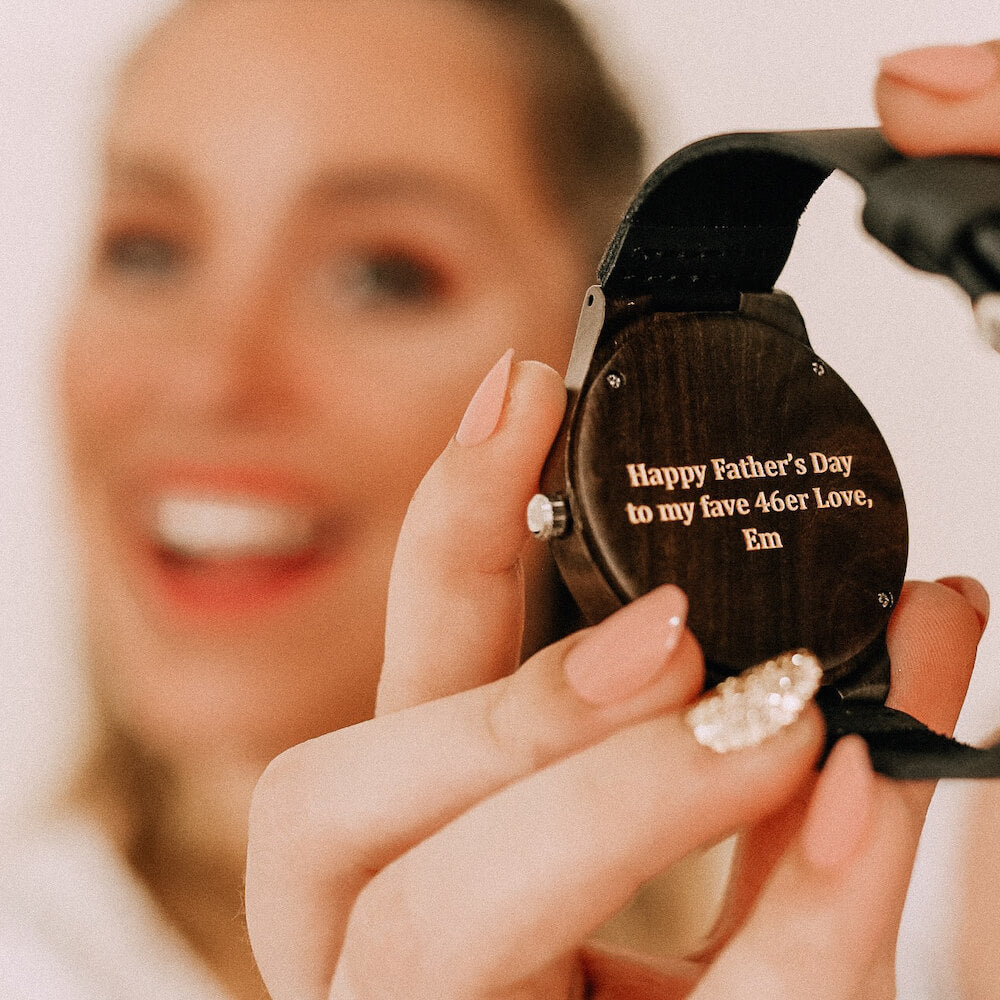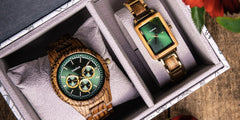You might want to think twice before stepping into the shower with your new, so-called waterproof watch. That should be pretty obvious, but apparently it’s not for most people. They assume that waterproof watches can be taken right into the water without any repercussions whatsoever — but that is far from the truth. This is why Treehut has prepared a guide on waterproof vs. water-resistant watches to help clear things up about different kinds of waterproof watches and discuss if there is even any truth in their labels. This can help you choose between waterproof vs. water-resistant watches, according to your needs and lifestyle.
Water-Resistant vs. Waterproof Watches
So what’s the difference between waterproof vs. water-resistant watches? Both terms are used interchangeably, but they are actually completely different. Water-resistant watches can withstand a certain degree of contact with water or immersion in water up to certain depth or pressure. On the other hand, waterproof watches are impenetrable by water, allowing full submersion.
Most watches are water-resistant instead of waterproof as factors like changes in temperature and pressure can always cause issues, leading to leaks. In fact, ISO 22810:2010 (which established the requirements and test methods used to verify the water resistance of watches) banned the use of the word ‘waterproof’ for watches as it claimed that they can never be 100% waterproof. There are watches that can be fully submerged under water, but they still weaken over time due to fluctuations in external elements.
Read More: How to Get Moisture Out of Your Watch
Watch Water Resistance Ratings Explained

Before deciding between waterproof vs. water-resistant watches, you need to understand the terminology for both.
BAR (barometer)
This indicates the water resistance of a waterproof wristwatch. 1 BAR is roughly equivalent to the pressure exerted by a 10-meter column of water. Just remember that the BAR is the pressure that the watch can withstand, not the depth it can function at for prolonged periods.
ATM (atmospheres)
This indicates how much static atmospheric pressure the watch can endure when submerged in water. 1 ATM is equal to about 10 meters of water pressure. However, this does not mean that the watch can function 10 meters below sea level (despite common belief). ATM is simply the number of times the pressure at sea level a watch can withstand without letting in water.
WR (water resistance)
If you want to compare the level of protection provided by waterproof vs. water-resistant watches, check their water resistance rating.
Understanding Waterproof Watch Rankings
Now let's break down what the different ratings mean, as this can help you determine which is a better fit for you in waterproof vs. water-resistant watches.
3 BAR or 3 ATM or 30m
These are for splash-resistant watches, which are only designed to withstand accidental water exposure, such as during the rain or washing up. This is the minimum standard for a watch to be considered water-resistant.
5 BAR or 5 ATM or 50m
Your watch is suitable for gentle and short submersion in water, like during showering or swimming in shallow waters. However, they are not suitable for water sports.
10 BAR or 10 ATM or 100m
These indicate that your watch is designed for enhanced water activities, like swimming, surfing, sailing, poolside diving, and snorkeling. Note that these do not include high-speed water sports or scuba diving.
20 BAR or 20 ATM or 200m
In this case, your watch has advanced water-resistant properties and is appropriate for professional-level water activities.
30 BAR or 30 ATM or 300m
Such watches are specially crafted for high-impact water sports, scuba diving, and saturation diving.
Anything above is the closest you can get to having a waterproof watch. Such timepieces are also resistant to shocks, magnets, and salt water, and legible in dark conditions.
Read More: A Guide to Choosing the Perfect Treehut Watch for Any Occasion
Are Wooden Watches Waterproof?

Since wooden watches are highly durable, people mistakenly assume them to be waterproof as well. However, any watch made with wood components can never be completely waterproof. Wood is a porous material that can absorb moisture, which can lead to warping, cracking, or weakening of the watch’s mechanism. Some wooden watches may have a water-resistant coating or treatment, but that does not make them entirely waterproof. Hence, it is best to avoid wearing them during activities involving water.
To better protect your wooden watch from water exposure, it is essential to understand the difference between waterproof vs. water-resistant watches first. If you are looking for options for the latter, Treehut’s Ocean Waste Collection features water-resistant straps made from recycled ocean plastic bottles. They are less likely to degrade when exposed to moisture, preventing damage and prolonging their lifespan.



























